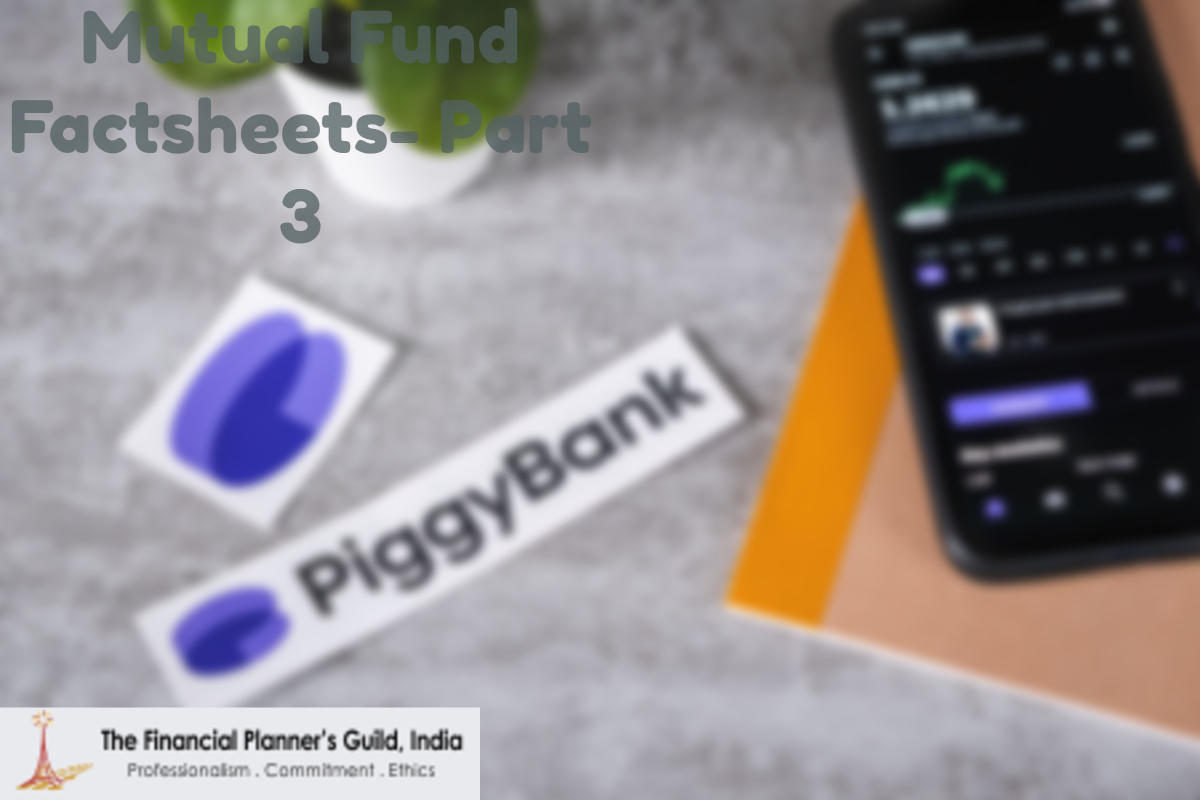
In the earlier parts of this series, we have had a look at how to understand factsheets pertaining to equity mutual funds. Let us now look at the other side, the debt funds. Debt being a separate asset class has different measurable parameters for judging risk and return.
Let us first understand what is a debt product? A debt product means there is a person who loans money and a person who receives it. For this amount loaned, the person getting the loan promises to pay a certain rate of return, either on a regular basis or along with the loaned amount which will be returned after a pre-decided time. This rate of return is the coupon or the rate of return. The product could be in various forms like a bank fixed deposit or a government bond.
The measurables in a debt product are the face-value, the coupon and the tenure. These are fixed. Many debt products like bonds etc can be traded in the market. This means they can be sold before the maturity date. This leads to variation in returns under changing interest rate scenarios. Thus in a portfolio, returns can change in different scenarios in spite of the portfolio consisting of fixed income securities or debt papers. Mutual funds hold a variety of debt instruments in their portfolios. Some examples of debt instruments are government bonds, treasury bills, corporate bonds, bank deposits, commercial papers (CP’s), certificate of deposit (CD’s), call money etc. When you study a factsheet for debt mutual funds, you are essentially looking for three things- credit quality, average maturity and modified duration.
Credit Rating: This gives an indication of the safety embedded in the papers held by the fund. This rating can be from various rating agencies like CRISIL, ICRA, etc. Different papers have different credit ratings applicable. Generally the highest credit rating is AAA. As the credit risk increases, the rating goes down to AA+, AA or AA- etc. Usually liquid and ultra short term funds have most of the paper of the highest quality. Income funds usually take a bit of a risk with AA category of papers, which are not the highest rating but can move up to the highest rating, thus increasing their value. This helps push up the returns in these funds. Income funds have a certain percentage which is invested in equity which will be measured on the parameters for judging the equity funds.
Average Portfolio Maturity: Each paper held in the portfolio will have differing maturities. The longer the maturity of the paper, the higher risk it bears. Thus a portfolio having higher average maturity will be more prone to interest rate fluctuation related changes. Interest rates and bond prices have an inverse relation. If the interest rates fall, bond prices increase and vice versa. When the bond prices go up, they can be sold in the market for a higher value or at a premium. Thus the NAV of your fund will go up. If the average maturity is higher, the portfolio will be exposed to more of these fluctuations. Thus, gilt funds which have usually longer average maturities are more prone to this risk, even though they are the safest in terms of credit ratings. By studying factsheets over a period of several months, we can understand the fund managers’s view on the interest rate cycle movement. A consistently high average maturity will mean that there is an expectation of fall in interest rates. Fund managers usually use gilts in the portfolio to manage maturity and liquidity.
Modified Duration : Modified duration tells you the kind of variation you can expect in returns when the interest rates change. It is essentially a measure for the sensitivity of bond price to interest rate changes. Suppose the modified duration of a fund is 2 years. If the interest rates fall by 100 basis points (1%), the return on this fund will go up by 1% multiplied by 2, i.e. 2%. In the reverse scenario where the interest rates increase by 1%, this fund will fall by 2%. So higher the modified duration, higher will be the volatility of the fund. The modified duration of gilt funds is usually the highest, whereas liquid funds have the lowest.
By looking at the above mentioned parameters one can understand what kind of debt fund will suit his requirements. Debt mutual funds form an important part of any investment portfolio especially from an asset allocation point of view. It is important to understand the risk and returns on this portion of the portfolio. Keeping an eye on the factsheets will be a very good step in this direction.
FPG India ©2024. All Rights Reserved.
Designed & Developed by W3M Technoz